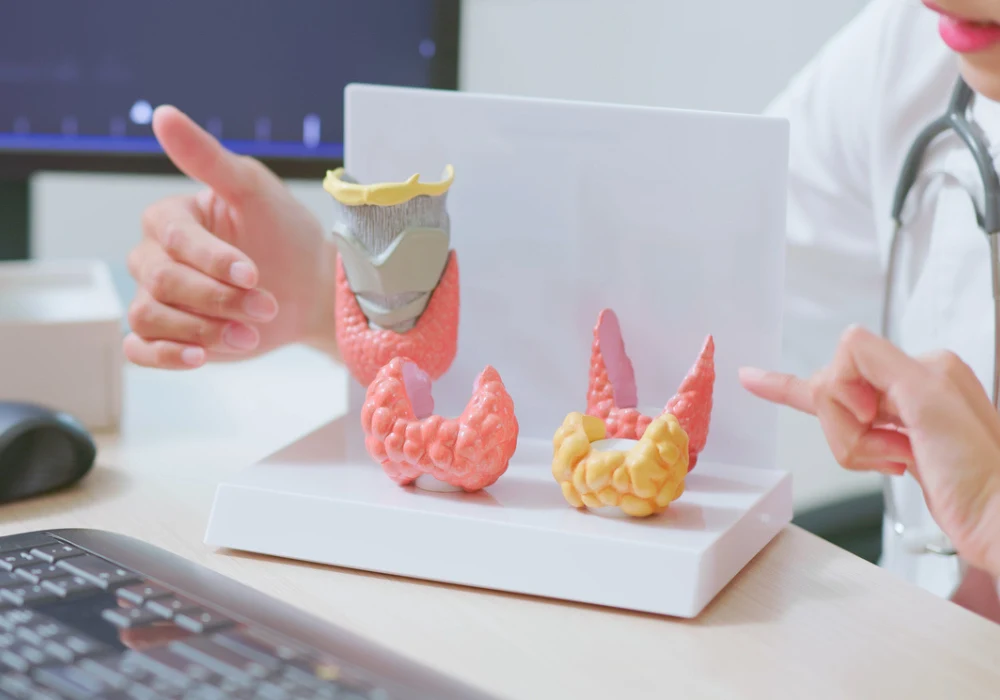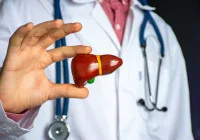Thyroid cancer has seen a global rise in incidence, contributing to a growing burden on healthcare systems and radiologists who interpret ultrasound (US) images for early detection. Traditional methods, such as fine needle aspiration (FNA) guided by the American College of Radiology’s TI-RADS, offer limited specificity and contribute to overdiagnosis and unnecessary procedures. While artificial intelligence (AI) has been integrated into various areas of cancer screening, thyroid screening has lagged behind in the adoption of triage-focused AI tools. To address this gap, researchers have developed ThyNet-S, an adaptive dual-task deep learning model that combines lesion detection and malignancy classification to enhance the accuracy and efficiency of thyroid cancer screening.
A Dual-Task Network for Detection and Classification
ThyNet-S addresses the complexity of thyroid US screening by decoupling two critical tasks: identifying the presence of nodules through pixel-level analysis and determining malignancy risk via deep semantic features. The model architecture includes three backbone networks—ResNet101, DenseNet201 and ResNeXt101—each contributing to enhanced feature extraction. These networks feed into a dual-branch classification head that handles detection and diagnosis independently but in parallel. The loss function used during training enables the model to adaptively learn both tasks without conflating their objectives.
The model was trained on a retrospective dataset of 29,004 thyroid US images and validated on an external set of 6,004 images. To ensure robust learning, the dataset included images of normal thyroids, benign nodules and malignant nodules, carefully balanced and labeled based on follow-up or pathologic confirmation. ThyNet-S delivered end-to-end predictions, categorising each image into normal, benign or potentially malignant categories, while dynamically adjusting interpretations based on the presence or absence of nodules.
Improved Diagnostic Accuracy and Reduced Workload
The diagnostic performance of ThyNet-S was evaluated against radiologists with varying experience levels. ThyNet-S achieved superior sensitivity (92.4%) and specificity (94.0%) compared with both senior and junior radiologists, who had lower sensitivity and specificity metrics. The model also yielded a higher area under the receiver operating characteristic curve (AUC), reaching 0.93 compared to 0.88 for senior and 0.87 for junior radiologists.
Must Read: AI Copilot for Thyroid Diagnosis: The Impact of ThyGPT
Beyond diagnostic accuracy, ThyNet-S significantly reduced radiologists’ workload in a simulated triaged screening setup. The model independently handled 60.4% of images by triaging normal and benign cases, allowing radiologists to focus solely on potentially malignant nodules. This led to a notable decrease in reading times—46.6% for senior and 44.0% for junior radiologists. Furthermore, the model preserved or enhanced diagnostic sensitivity, particularly among junior radiologists, where it increased from 86.8% to 88.2%.
Optimising Clinical Decision-Making through FNA Strategy
FNA is a cornerstone in thyroid nodule management, yet its low specificity leads to many unnecessary procedures. ThyNet-S supports improved FNA decision-making through two strategies: using its own predictions independently or in combination with TI-RADS. The independent strategy applied FNA to nodules 10 mm or larger identified as potentially malignant by ThyNet-S, while the combined strategy required both TI-RADS and ThyNet-S to indicate malignancy.
Both approaches yielded positive results. The overall FNA rate decreased from 28.3% with TI-RADS alone to 21.9% with ThyNet-S and to 18.8% with the combined strategy. Positive FNA rates improved significantly, from 61.3% to 85.1% and 88.5%, respectively. Unnecessary FNA rates dropped from 38.7% to 14.9% and 11.5%. These results demonstrate the model’s ability to enhance clinical precision by reducing invasive interventions without compromising sensitivity or missing significant cancers.
ThyNet-S represents a promising advancement in AI-driven thyroid cancer screening, offering a solution that improves both efficiency and accuracy. By separating the tasks of detection and classification, the model achieves high diagnostic performance while significantly easing the burden on radiologists. Its integration into clinical workflows reduces reading times and unnecessary procedures, enabling more targeted and effective screening. Although further validation in real-world settings is necessary, ThyNet-S provides a robust framework for future AI applications in cancer screening and decision support.
Source: Radiology: Artificial Intelligence
Image Credit: iStock










